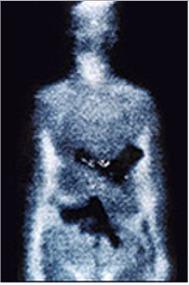Hawley Notes Cautious Approach Must Be Used
 Government plans to
implement advanced security equipment at airports following the
September 11, 2001 terrorist attacks have yet to bear much
fruit.
Government plans to
implement advanced security equipment at airports following the
September 11, 2001 terrorist attacks have yet to bear much
fruit.
In a recent report, The Washington Post notes screeners still
use X-ray machines to scan carry-on luggage, and passengers still
pass through the same magnetometers they used to prior to 9/11 --
machines that can't detect plastic or liquid explosives.
In fact, about the only things that have changed at checkpoints,
are the number of personnel staffing them... and the types of
checks they perform. Opinions of the effectiveness of those
measures are mixed, at best, and lawmakers have repeatedly called
for new technologies to plug the gaps caused by all-too-human
error.
"The snail's pace of deploying new technology is unacceptable,"
said Rep. Bennie Thompson (D-MS), chairman of the House Homeland
Security Committee. "We remain vulnerable because we have not kept
up with technological innovation."
Despite the nature of the 9/11 attacks, most of the $600 million
spent on airport security upgrades in the past six years has gone
towards upgraded explosives screening equipment for checked
baggage, utilizing medical imaging technology. A relative fraction
has been spent on detecting dangerous liquids or devices smuggled
into the passenger cabin.
A few changes are coming. By midyear, the Transportation
Security Administration is expected to deploy upgraded X-ray
equipment to some airports, as well as handheld scanners to detect
liquid explosives during a secondary check. Both efforts are part
of a $250 million upgrade plan, nearly three times the $89 million
allocated in the last fiscal year.

While the advancements are welcome, it's unlikely the devices --
some of which aren't so "new," the Post notes -- will result in
noticeably quicker, more efficient, or more effective
screening.
Some of the devices the TSA has tested, such as the much-touted
"puffer" machines, have yielded less-than-stellar results --
proving to be too expensive to maintain, and too complicate to use
efficiently. After purchasing 200 of the machines, 109 are now
collecting dust in a Texas warehouse.
"Company after company, trying to be helpful and make some
money, was pushing their technology. . . . After testing it, we
found it didn't do near what they promised," noted John Magaw, the
TSA's first administrator. In a report issued last February, the
Government Accountability Office "found that limited progress has
been made in developing and deploying technologies due to planning
and funding challenges."
Current TSA Administrator Kip Hawley counters his agency, and
the Department of Homeland Security, have come up with a new plan
to work together with companies to develop new systems. He pins the
current shortfall on private industries, that don't invest great
sums of money in devices with only limited demand.
 "The real story here is
that the capital markets do not value the security industry as a
place to put their capital," Hawley said.
"The real story here is
that the capital markets do not value the security industry as a
place to put their capital," Hawley said.
Those companies, in turn, say some of the blame lies with TSA --
specifically, with the fact the agency has had four administrators
(Hawley, who came onboard in mid-2005, is by far the
longest-serving to date) and three chief technology officers in its
relatively short existence. Such high turnover, they argue, makes
it hard to agree on a set strategy.
It "can be a bit of a maze to get from concept through
development," said Mark Laustra, vice president of homeland
security for Smiths Detection, which makes the puffers. "The TSA
has to review all potential technologies and test them to see if
they are practical for the checkpoint. This process takes time, and
then the lab and others like homeland security and TSA have to
agree to pilot a program."
Other advancements are in the works, as well. So-called
"backscatter" X-ray machines, which give highly detailed images of
passengers as they pass through them, are expected to be deployed
to major airports in the near future.
Those machines are far from perfect, though. Each scanner costs
over $100,000 apiece, plus another $20,000 per location to set up
remote viewing stations, due to privacy concerns. The scans take
about 45 seconds to complete -- way too long for a long screening
line -- and per TSA directive must be digitally "blurred" to
obscure certain areas of a person's anatomy. Again, that's out of
respect for passenger privacy... but such blurring can also
obstruct images of weapons hiding on the person.
Hawley is more optimistic about "millimeter wave" devices, which
also see through clothing but work much quicker. One device is now
in use in Phoenix, and TSA plans to buy eight more for $1.7
million. In addition to the steep pricetag, millimeter wave images
(shown at right) aren't as clear as backscatter.
 ANN's Daily Aero-Linx (04.15.24)
ANN's Daily Aero-Linx (04.15.24) Classic Aero-TV: 'No Other Options' -- The Israeli Air Force's Danny Shapira
Classic Aero-TV: 'No Other Options' -- The Israeli Air Force's Danny Shapira Aero-News: Quote of the Day (04.15.24)
Aero-News: Quote of the Day (04.15.24) Airborne 04.16.24: RV Update, Affordable Flying Expo, Diamond Lil
Airborne 04.16.24: RV Update, Affordable Flying Expo, Diamond Lil ANN's Daily Aero-Term (04.16.24): Chart Supplement US
ANN's Daily Aero-Term (04.16.24): Chart Supplement US





